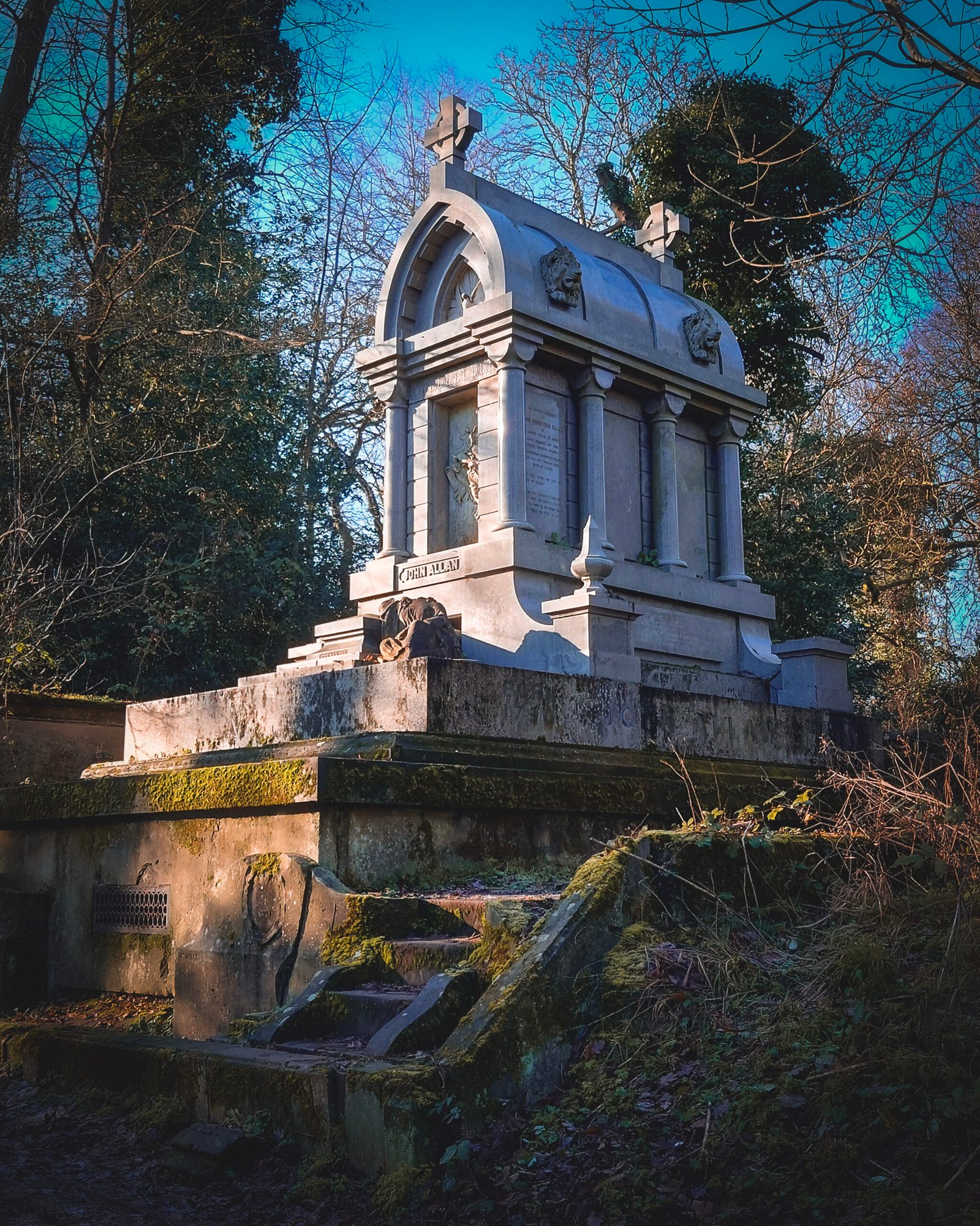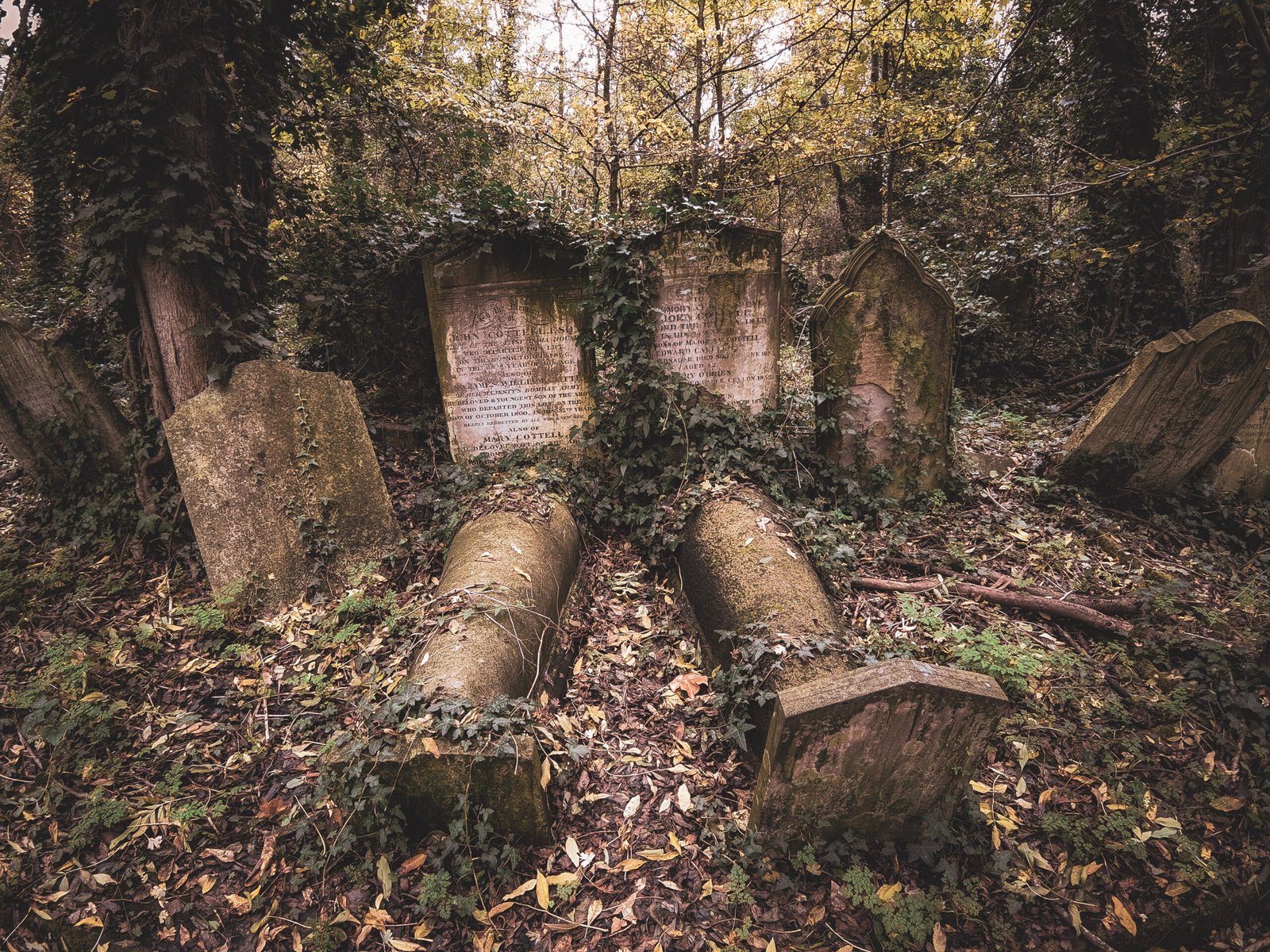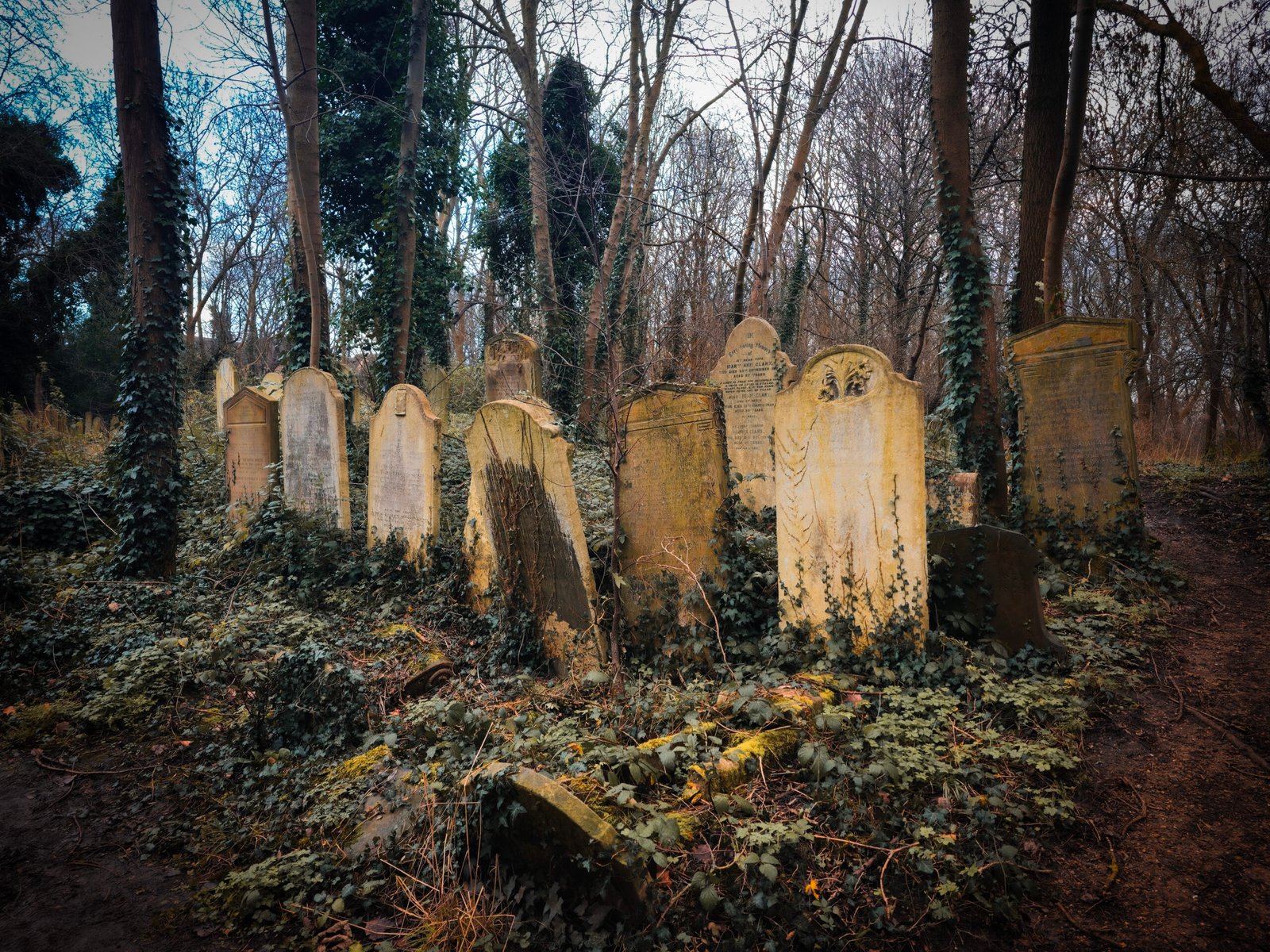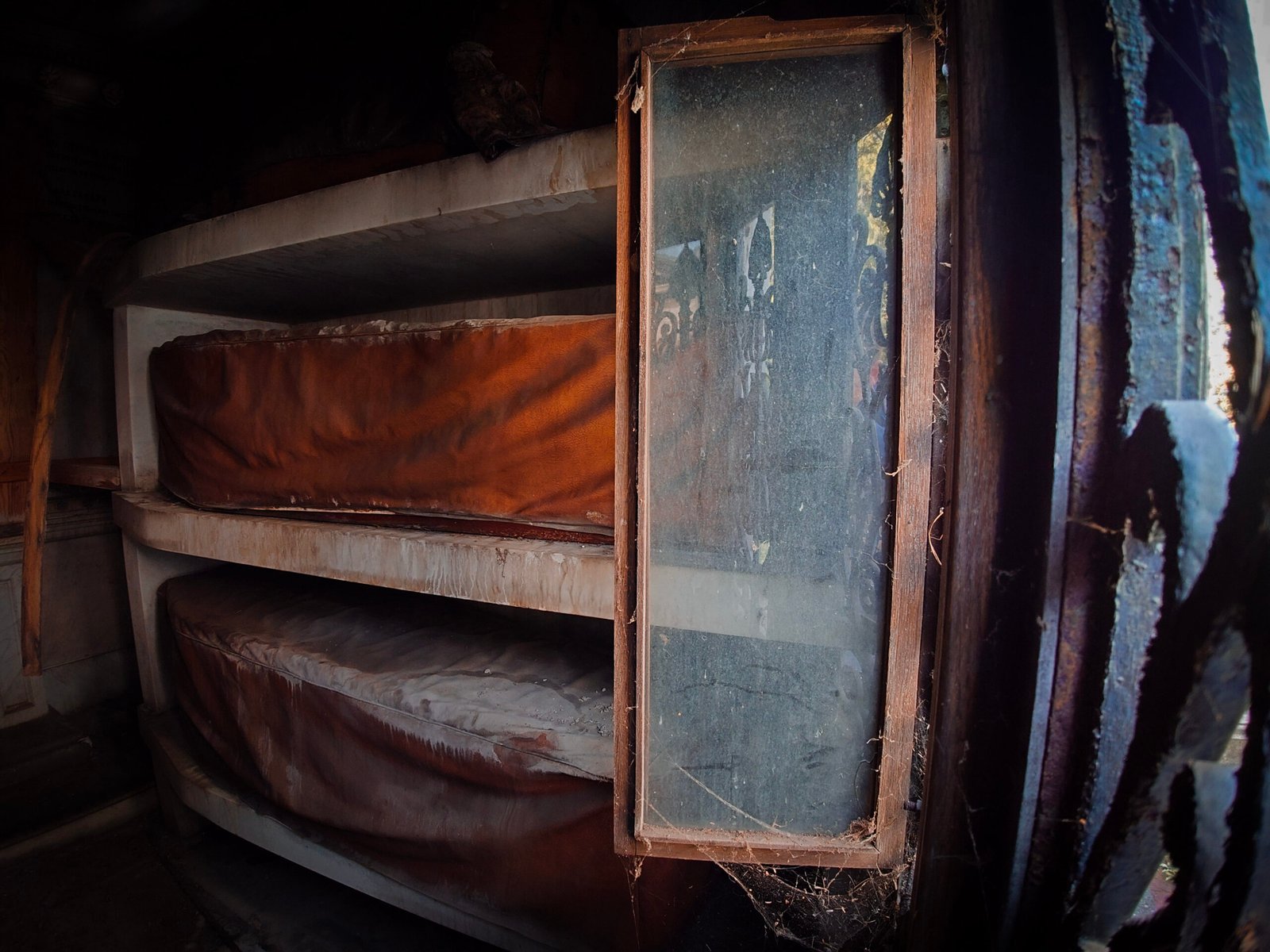London’s Magnificent Seven Cemeteries — Ranked!
Introduction
The story of London’s graveyards in the opening half of the 19th century is not one for the sensitive. A population of around 1 million more than doubled. At a time where life was often short, and cremation was unheard of, the majority of the capital’s graveyards were woefully incapable of handling a huge upturn in usage. Publications such as George Walker’s Gatherings From Graveyards catalogued a wealth of horrors from London churchyards, making the key point that contemporary burial practices posed massive risks to public health. In response to increased concern, domestic thinkers looked across the English Channel to the wide avenues and open spaces within the garden cemetery of Père Lachaise in Paris.
In 1832, following the successful establishment of out-of-centre cemeteries in Manchester and Liverpool, Parliament passed an act to permit and encourage the development of private cemeteries around the outskirts of London. Between 1833 and 1841, a succession of new large burial sites were created, becoming informally known as the ‘Magnificent Seven’.
The cemeteries can still be visited today, though the London conurbation has long since swallowed up their once rural surroundings. Each is unique with its own atmosphere, layout, quirks and architecture. I’m fortunate enough to have been to them all to learn more about their individual histories, take photographs and be surprised by what is around every corner. Every one of these locations is worth your time, effort and expenditure to visit, but I have my favourites. Here then, are London’s ‘Magnificent Seven’ ranked in my order of preference:
#7 – Nunhead Cemetery

Opened in 1840, just beyond Peckham on a hillside in the south east of London, Nunhead Cemetery bears the scars of a financially troubled history. By the time its owners United Cemeteries folded in 1969, Nunhead’s iron railings had been sold off, vandals had done their worst and nature had begun to reclaim parts of the site. In 2001, following an extensive restoration project, Southwark Council reopened the cemetery to new burials. The restored entrance is impressive and its railings are emblazoned with inverted torches. A sloped avenue leads up to a dominating, photogenic chapel designed by Thomas Little. Further on in, there are the expected stone needles and urns for the wealthy who reside underneath, plus some small mausolea, the best of which is the unusual and elaborate Allan vault. In one part of the cemetery the path drops away to create a gap in the trees through which you can see down to St Paul’s Cathedral.
Of the ‘Magnificent Seven’, Nunhead feels the closest to a standard, well kept urban cemetery you could visit anywhere in England. It doesn’t possess the quantity of elaborate architecture you can find at Highgate, Brompton, West Norwood and Kensal Green; and although it’s designated as a nature reserve, Nunhead Cemetery’s brambles and ivy have been well tamed by comparison to the fantastic jungles of Abney Park and Tower Hamlets. As such, Nunhead lacks the more unsettling, out-of-kilter and gothic elements of its siblings’ atmospheres. Nonetheless, it’s a beautiful place to visit and possesses a wonderfully peaceful ambience.
#6 – Abney Park Cemetery

A green, wild and weird place, Abney Park Cemetery was established in 1840 as a dissenters and non-conformist burial site to the north of the city. Its willingness to accept burials from all denominations made it an attractive proposition. Perhaps too much so. By 1896 Isabella Holmes, writing as Mrs Basil Holmes, observed ‘The tombstones are crowded together as closely knit as it seems possible and yet they are being constantly added to, although the greater part of this cemetery is already over full’.
In common with its relatives at Highgate and Nunhead, the 20th century brought leaner times. In 1970 its owners entered administration and the cemetery was effectively left untouched to become an ‘urban wilderness’. During this time Abney Park acquired a reputation for antisocial behaviour that it hasn’t been able to shake off. In 2014 The Mirror newspaper claimed that homeless people were ‘having drug-fuelled orgies’ in the more remote areas of the grounds.
Problems aside, the aim of the cemetery’s current management is to preserve not only its architectural features, but also its plant and animal life. The undergrowth is dense, ivy shrouds graves and the numerous toppled headstones have been repurposed to line the edges of paths. It is no exaggeration to state that Abney Park possesses a truly photogenic, slightly surreal and thoroughly eerie, post-apocalyptic feel.
#5 – Tower Hamlets Cemetery

The final of the ‘Magnificent Seven’ cemeteries to open (1841), Tower Hamlets Cemetery is full to bursting with 350,000 souls who once walked London’s East End, many of whom were deposited in unmarked common graves. The cemetery’s operators soon became unable to effectively maintain its rapidly filling grounds. By the end of World War II, the cemetery’s original buildings had been damaged by bombs and all were hauled down after ownership was purchased in 1966 by the Greater London Council. The authority planned to convert the cemetery into an open space by cutting down trees, removing the undergrowth that had been allowed to take hold and clearing swathes of memorials, but a lack of funding meant the work made little progress.
Open 24 hours a day via local authority issue side gates, the site is hemmed in by housing and high-rise tower blocks. The excessive bass from the music of residents booms on the breeze, together with the lingering smells of exotic cooking and marijuana. Locals walk their dogs in the cemetery whilst keeping to themselves, cyclists pass through without stopping and photographers attract curious looks.
Tower Hamlets Cemetery is both gritty, out of place with its surroundings and haunted by a desperate sadness. Under the trees and amongst the brambles, the rows of cracked and crooked headstones are stained green and greener with moss and lichen. In the absence of grand memorials, many of the stones are rich with symbolism. The English urban gothic melancholia is underscored by a wonderful contemporary memorial for the 513 children of the Barnardo’s charity who have been buried here in otherwise unmarked plots between 1876 and 1924.
#4 – Kensal Green Cemetery

You can never forget that you’re in London when you visit Kensal Green Cemetery. Gasometers loom to the south and tall buildings catch your eye in the distance. Throw in the constant buzz of traffic and trains, and a visitor entering through the main gates could easily write off this cemetery as nothing special. You first encounter modern graves, including some weird, flimsy modern mausolea. But walk a little, past the outrageously vast but touching memorial garden to eleven year old Medi Oliver Mehra, then older memorials — including the sober mausoleum of Prince George, Duke of Cambridge — and stone angels come into view. Behind the white, pillared Anglican Chapel is Centre Avenue. Rich with grandeur and Egyptian Gothic, it is the place to gawp. Head off the path, under the trees and some of the graves here are in need of repair. With a torch and some patience you can find coffins stacked in their underground vaults.
Spread over more than 70 acres, the first of the ‘Magnificent Seven’ warrants repeated visits. It is so easy to miss many of the ‘big name’ graves and monuments. I have visited on three occasions now and still haven’t located certain features, including the beautiful Soyer monument.
#3 – Brompton Cemetery

If Tower Hamlets is as raw as an English cemetery can be, then Brompton is the opposite. Maintained by Royal Parks, the 40 acre site feels much smaller, and is busy during daylight hours with tourists, walkers and joggers.
Apparently, well, according to Wikipedia, the intention of architect Stephen Geary was to provide the cemetery with the feel of an open air cathedral. To a large extent he was successful; the central area boasts a domed chapel, colonnades and catacombs. The number of headstones and monuments inside this part of Brompton is phenomenal. They really are packed side by side. Walking away in a northerly direction, you will come across some wonderful statues including the Barbe Sangiorgi monument.
All in, Brompton Cemetery is on a par with Highgate in terms of what it offers to the visitor — and maybe more so for the photographer — albeit without the sunken vaults. It is a location that is both comforting and enchanting rather than spooky or bleak.
#2 – Highgate Cemetery

So much has been written about Highgate Cemetery and so much of it is true — just not that part about the undead. Established in 1839, it is surely London’s grandest necropolis. The West Cemetery is both beautiful and daunting, best known for its gothic centrepiece: the Egyptian Avenue and Circle of Lebanon’s stone vaults. The wooded feel is testament to the troubled period that befell the West Cemetery in the mid-20th century. Much of the site was allowed to become overgrown whilst vandals and legend-trippers found their way into mausolea and vaults. By and large, the Friends of Highgate Cemetery have done a fantastic job with their sensitive approach to restoration work.
Across Swain’s Lane is the East Cemetery, famous for its monument of Karl Marx and its abundance of left wing graves. But there is much more to see, much of it modern. Author Douglas Adams’ simple gravestone is adorned with pens and towels left by fans, and the memorials of sculptor Anna Mahler and painter Patrick Caufield are suitably arty. It’s not unfair to say that the East Cemetery has become a burial place for the far out and wealthy. At times it can seem pretentious, though it offers an experience you won’t encounter anywhere else across the ‘Magnificent Seven’.
Highgate Cemetery is the only one of the ‘Magnificent Seven’ where an entrance fee is charged. However, it’s well worth the modest cost.
#1 – West Norwood Cemetery

Most lists covering the ‘Magnificent Seven’ have Highgate at the top, but I’ve chosen West Norwood Cemetery. Tucked away in a busy but not unpleasant part of South London (just three miles west of Nunhead Cemetery), this garden of sleep deserves far more attention than it receives.
West Norwood boasts some of the best funerary architecture in the capital. The showcase has to be the Greek Necropolis; a walled, gated plot purchased for the wealthiest members of the capital’s Greek Orthodox community. In the winter half-light it is the stuff of gothic horror, watched over by the temple style mortuary chapel. At least two of the mausolea have been designed so the curious visitor can see the lead-lined coffins stacked inside.
Whilst anyone armed with a video light can also make other discoveries in the cemetery’s oldest parts, the real joy of West Norwood is the feeling of closeness you get to the natural world away from the city beyond the perimeter railings. Whilst never fully overgrown like Abney Park or Tower Hamlets cemeteries, it contains small wooded areas where foxes roam and bats fly in after dark to feed. In the trees you can see and hear members of London’s feral parakeet colony. On one occasion I even think I heard the hoot of a tawny owl.
Did I say that West Norwood Cemetery deserves more attention? Yes. But, at the same time, I’m glad it doesn’t receive it. Every visit I’ve made there has been an adventure where memories are made. It’s a genuinely special place that proves joy, wonder, pain and melancholia (it possesses a working crematorium) are all part of the fabric of life. I have yet to visit a better English cemetery and I’m dubious one even exists.
Collections



contact the architecture of death